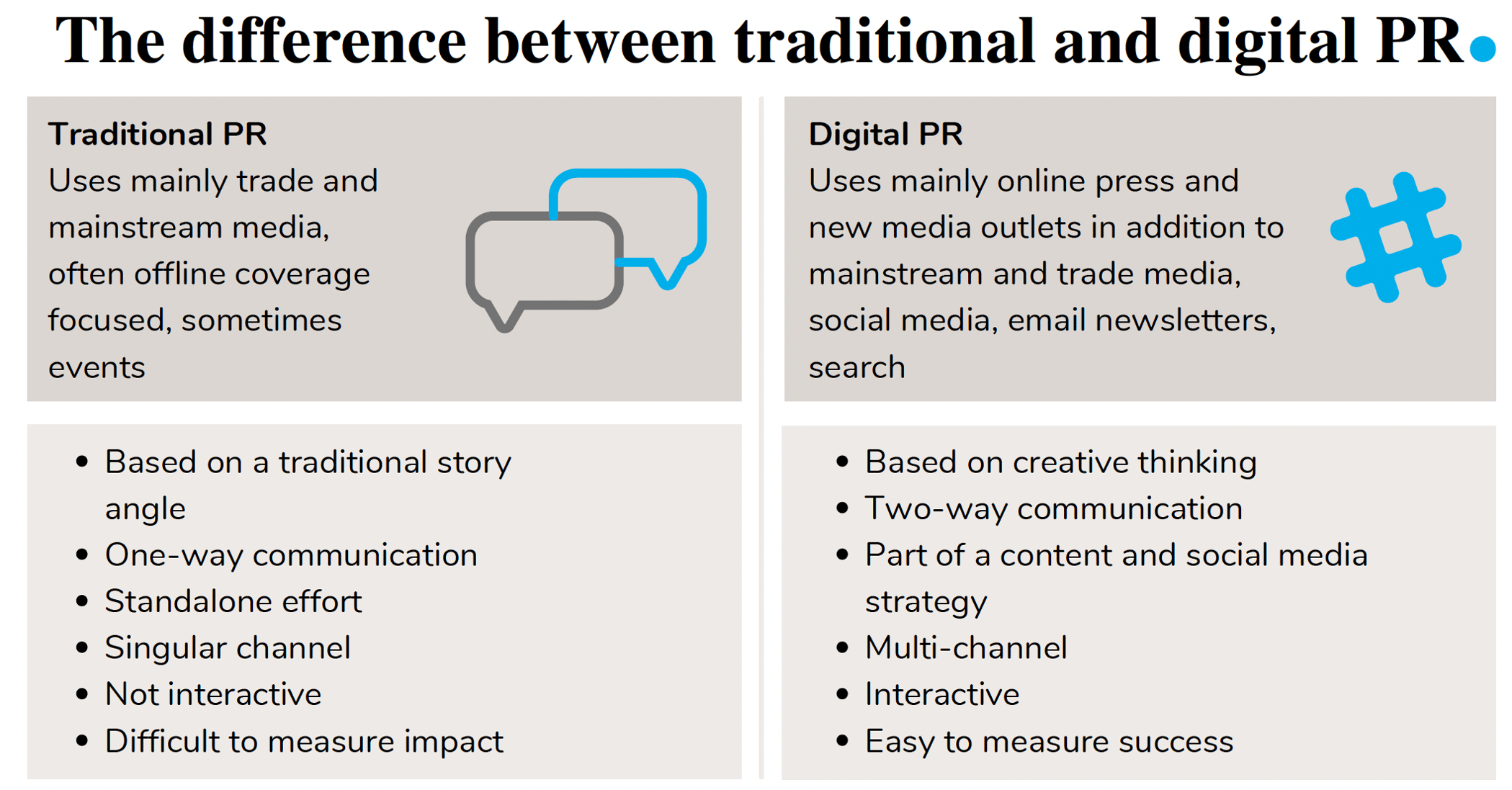The C-suite and Boards of financial services companies are looking for digital-driven innovation and measurable business outcomes from their investments in PR. A positive profile article in the Australian Financial Review can be helpful, but what impact can we measurably point to?
As a data-driven person, I like to have confidence that communication strategies work and the rise of digital PR allows us to do just that.
If you’re wondering what we mean by digital PR, read Christina Lu’s blog about “How to use Digital PR to generate high quality leads for financial services”.

So, how do you get started with your digital PR program?
1. Audit your website
In all the conversations I’ve had with our clients’ clients as part of our buyer persona development work (see how we did this for Heffron), visiting websites is always part of the buyer’s/ investor’s decision-making process.
Likewise, buyers/ investors turn to Google for answers relating to how they can solve their problem or to learn more about a company they are considering doing business or investing with.
Therefore, you will want your website to put your best digital foot forward and to be discoverable in search.
Assess your website on how it rates across the following:
- SEO
Current Domain Authority (DA), any bad backlinks, what is the number of valuable backlinks especially those with a higher DA, mobile/ site responsiveness, download speed, optimisation of existing content, meta data, 404s
- Website content
Answers/ content that addresses key customer questions – top 10 most common questions asked about, brand/client/topic related to organization, top 10 topics/keywords that define your business, what are the key topics you want your organisation to be known for - Previous benchmarks
Bounce rates, total users on the website, average session duration, number of pages visited per session, session per device, top audience locations, % of new users versus returning users, top 10 pages visited, top channels and key times on the website - Competitor Research
Understand how your competitors are performing, what their online presence is like and how they are engaging with their audience
2. Identify what metrics matter\
I like to think of metrics in terms of being either windscreen i.e. forward indicators, or rear view mirror indicators. You will want a mix of both and they should be interconnected.
For example, the number of likes/shares/comments on a social post may be a forward looking windscreen indicator of how many people land on your website (and you know your website conversion stats and therefore can predict business-related metrics like new business enquiries or PDS downloads).
If you know social engagement drives website traffic which in turn drives revenue growth, then tracking social engagement is important. If there’s no discernible correlation, social engagement could be just a vanity metric. You’ll need to figure that out.
Similarly, tracking the impact on website traffic correlating to coverage in various media outlets and the topics covered can provide useful insight. For a funds management client of ours, we saw no uptick in website traffic from coverage in the Daily Telegraph despite that newspaper having huge reach. However, coverage in an online new media outlet with a smaller audience significantly spiked the client’s website traffic. For another client in the lending space, the Daily Telegraph drove a tonne of interested people to them. There’s no “one size fits all” approach, you’ll need to find what works for your brand.
As a start, consider which of the following website metrics help you predict the success of your digital PR efforts:
- Total users (aka visitors)
- Bounce rate – this is a good indicator of whether the traffic is from people likely to be interested in you
- Average session duration – the more time they spend exploring your company and content the higher the likelihood they are interested in your offer
- Key times on site -
- Number of pages visited per session – the higher the number of pages visited the more likely your content is relevant to them
- Top audience location – this is helpful for understanding your audience’s demographics and therefore whether geotargeting makes sense
- Percent of new versus returning visitors – if your brand is growth oriented you will want to be reaching new potential customers and therefore a high percentage of new visitors
- Top 10 pages viewed – mine this for insights on what interests your visitors most (site search can also be helpful)
- Top channels/ sources i.e. where your traffic is coming from (if you can secure backlinks in media coverage then you will see if that media outlet’s audience is clicking through to your site)
We have a host of other metrics we select for our client’s performance dashboards. Get in touch if you would like to discuss what might be best suited to you.
3. Set benchmarks for media and social media channels
Once you’ve identified the metrics that matter to your brand, you will want to set benchmarks to reach and goals for what uplift your digital PR program should deliver.
Here are some possible benchmarks to consider:
- Total number of media articles generated
- Total number of backlinks generated by media
- Number of by-line articles were seeded
- Number of articles shared
- Number of pieces of owned content shared
- Target media organisations that generated the most traffic to the website
In terms of goals for your digital PR efforts, think along the following lines:
- Increase traffic to site from:
- Media by xx%
- Organic social by xx% (broken down by social platform)
- Paid social by xx%
- Increase time on site per session by xx%
- Increase traffic from specific target demographics by xx%
- Increase pages visited by xx%
- Increase email/ leads added by xx%
- Increase sales revenue through PR by xx%
Again, the list is long but your brand will need a dashboard that is right-sized for you so drop us a line if you would like to know more.











